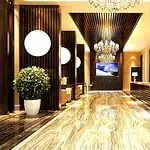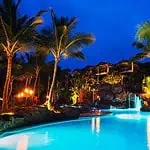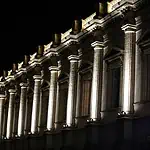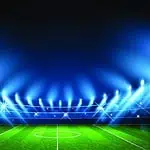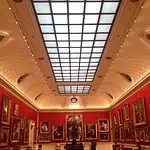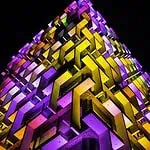Full spectrum lighting is considered the light source, with a color temperature range between 5000K and 6500K. However, it can also be termed as the light covering the electromagnetic spectrum concerning the wavelengths proven beneficial to animals and plants.
However, in the absence of natural light, it’s obvious that everyone needs any kind of artificial light to acquire glances at the surroundings or do any other work.
On the other hand, plants use sunlight for growth and development. Without it, the plants need an artificial light source with a fuller light that will provide the same essence to them, just like sunlight.
The distinct sections of this content will provide several junctures of spectrum lighting. Along with it, the blog will also give about the advantages and disadvantages of it concerning some crucial attributes.
Is My Bulb Full Spectrum?

It’s very important to figure out whether your bulb is full spectrum. However, this is because the light spectrum contributes much to the enhancement of well-being along with triggering the senses of being alert. But from where can we gain this knowledge? Is the classification of the bulb enough to answer this question?
- LEDs
The most common and acceptable type of light is LED. The digital diodes provide light in the LED bulbs. These kinds of light sources have a warmer, natural white tone. However, it’s also considered a digital light source as it mixes up with other sources like incandescent or halogen to provide the best lighting.
- Halogen
Generally, halogen light is considered the enhanced or the better version of incandescent light. This is because the blue spectrum is provided more by halogen than by incandescent light. However, the increased blue intensity of halogen is much more energized and effective. On the other hand, it also has the same lighting benefits as incandescent light.
- Fluorescent
Fluorescent light has a warmer appearance which looks more like daylight. However, this depicts that the visible light spectrum has more blue wavelengths than red. As a result, the fluorescent light provides a much-energized effect. On the other hand, this kind of light also can be detected with UVB light which will thus promote the synthesis of vitamin D.

- Incandescent
Incandescent light bulbs are also known as “analog” light. This is because it’s capable of providing full spectrum visible light. Along with that, it also provides nourishing infrared energy. The spectrum of Incandescent light bulbs is more red than blue. As a result, it looks more prominently dusk or dawn as this kind of bulb has red wavelengths, which is why it provides a soothing and relaxing effect.
Daylight Bulbs. Vs. Full Spectrum Bulbs
Spectrum
The daylight bulbs have a warmer color temperature but don’t have a full spectrum. At the same time, full-spectrum bulbs have a cooler color temperature.
Wavelength
The daylight bulbs have a spike of blue light. However, the full spectrum bulbs don’t have so.
Applications Of Full Spectrum Lights
- Stimulation & Trigger Alertness
Every shade in the light spectrum has an associated wavelength and energy effect. As our eyes interpret the presence of blue light as an indication for the daily release of cortisol and subsequent suppression of melatonin, the sleep hormone, a blue light will be necessary to induce an awakening impact.
- For The Best Well-being
This one serves as more of a warning since improved well-being might mean different things to different people. So, on this one, you just need to abide by what you believe.
Use a range of lighting in terms of light technology, color temperature, etc., if you want to make the most of your light.
- SAD Relief
The most evident and widespread application of broad-spectrum light is to mitigate and alleviate SAD symptoms (SAD). Bright light treatment refers to using bright light in more therapeutic, concentrated doses through special light boxes or light pads. These light therapy devices emit stimulating quantities of brilliant white light that our bodies interpret as similar to sunshine. This stimulates our circadian cycle and has an energizing, awaking effect.
- Depression Treatment
Some researchers say that light therapy can aid in treating seasonal affective disorder (SAD), a kind of depression linked to seasonal fluctuations that typically begins and finishes around the same time each year. Sleep and mood-related brain chemicals are influenced by light therapy, which is performed by sitting close to a light box that emits light that resembles sunlight. In turn, this reduces the symptoms of SAD.
- Sleep Disorders Treatment
The main treatment for circadian sleep disorders, in which the circadian rhythm, or the time of day and night, is interrupted and the patient frequently falls asleep at the same time late at night, is by using light therapy.
- Household Gardening
Like outdoor plants, indoor plants thrive under full-spectrum light fixtures because the spectrum of light they emit closely resembles that of the sun. With a set of led lighting, you can grow orchids, houseplants, culinary herbs, and certain other plants. Bulb sets with the full spectrum are also great for sowing.
- Employs Matching Colors in Art
Because northern sunshine is thought to be more neutral and diffused than the direct, “yellowish” nature of southern sunlight, it is recommended that an art studio in the northern hemisphere be illuminated with it during the day. Due to the lack of north-facing windows in many artist studios, full-spectrum lamps are occasionally employed to simulate this light. When dealing with fabrics or yarn in low light, color scientists, paint shop color matches, quilters, and others adopt full-spectrum fluorescent lamps to help them achieve the right shades as they would appear in daylight or under the gallery lighting later.
- Use in Aquariums
Broad-spectrum lighting promotes the growth of aquarium plants and improves the well-being of the fish and tank. Although plants have developed to receive actual sunshine, full-spectrum light bulbs frequently replicate the focus of sunlight’s wavelengths to the point that plants are encouraged to thrive. Additionally, since artificial lights frequently degrade the natural colors of fish, plants, and other aquatic animals in an aquarium, full-spectrum lighting improves these hues. Freshwater aquariums employ full spectrum lighting more often than marine or coral-reef aquariums, which frequently require very powerful blue light.
In short, full-spectrum light bulbs are a fantastic option if you want your indoor light to be as similar to the natural outdoor light during the day as possible. However, as Natural White LED bulbs closely resemble the sun’s light, you might also wish to consider it.

Advantages Of Spectrum Lighting
Let’s explore how allowing sunshine into your home can enrich your life with more love and light.
- Assist in Reducing Sleep Disorders
Sleep disorders have been successfully treated using full-spectrum light therapy. Full-spectrum light treatment, according to research, enhanced morning alertness, reduced the need for daytime naps, enhanced and increased nighttime sleep time, and enhanced sleep duration, enabling a longer and deeper good night’s sleep.
- Natural and Painless
Full-spectrum lights, lightbulbs, and lamps have the wonderful benefits of being comfortable, requiring no recovery time after using it or treatment, and seamlessly integrating into your day. To enjoy the fullest possible advantages of the sun inside your home, you can either simply replace the regular LED light bulbs or employ full-spectrum light as part of a light treatment program.
- Draws the Sunlight Inside Your House
Natural sunshine stimulates hormone balance, healing, and restoration within the human body; it is essential for our body’s ability to know what to do and when to do it. A growing body of research demonstrates that human health is negatively impacted when our ability to maintain communication with these environmental regulators is interrupted. The incorrect lighting in your house can cause various problems, including sleep issues, obesity, a lack of motivation, poor energy, and more.
To ensure that we are as healthy and happy as possible in a rapidly evolving modern world, Block Blue Light exclusively focuses on enhancing our modern surroundings with blue light blocking solutions, red light therapy, and full-spectrum illumination.
- Maintains Body Regulation
It can be dark inside your home throughout the day; therefore, you’ll turn on an LED light source. However, being cut off from natural light and sunlight interferes with your body’s ability to regulate itself. By using full-spectrum light, you may enjoy the daytime in your house while also synchronizing with the earth and how it regulates your body. Resulting in enhanced well-being, greater health, and a higher quality of life.
- Reduced Eye Strain
Due to its low “flicker rate,” a standard fluorescent light can negatively impact someone’s vision. If light intensity changes quickly and repeatedly, it will flicker. When a lamp or overhead light is first turned on, many people may frequently notice a light flicker; however, flickering always occurs when the light is powered. The flickers move so rapidly that many individuals can’t recognize them individually.
Regardless of whether a light’s flicker rate is not over 60 flips per second, which most workplace lights are not, it can still strain your eyes even though it may not seem to. On the other side, full spectrum lighting uses solid-state technology, which provides a quick flicker rate that won’t strain the eyes.
- Enhances Mood
Full spectrum lighting can dramatically boost a person’s mood and energy level because it closely resembles the natural light seen in sunlight. The UV rays can stimulate a person’s mind in natural light to feel the good and healthy, positively impacting mood. This might contribute to a rise in motivation to work and productivity simultaneously.
For students, it is a fantastic lighting substitute. It can facilitate creating a relaxing environment for learning, and reading after a long day is less stressful due to low eye strain. One of those quick fixes that can enhance your vision over time is to encourage optimum lighting in both your work and home environments.
- Enhanced Perception of Color
Full spectrum lighting is a better light and color perception source than standard indoor lights. Many people have discovered that they can notice more distinct differences in colors and hues when working since these lights offer a whole spectrum of color and are not inclined towards particular colors like other light sources. This is crucial for workers who engage in vision fields like graphic design.
Some full-spectrum bulbs’ natural UV radiation can also have a fluorescent-brightening effect on papers and textiles that have been improved using brightening compounds. Brightness and natural light work together to make words on a page considerably more legible and improve reading comprehension.
Minor Disadvantages Of Spectrum Lighting
Light highlights specific things to make them appear more appealing or fresh. To spoof the products’ appearance is another way to put it. Therefore, their distinctive light is applied to improve the appearance:
1. Meat (slightly pinkish-white)
2. Bread (very warm light, slightly amber)
3. Fish (extremely chilly, already blueish)
Therefore, full-spectrum LED illumination would not be appropriate for these applications.
What To Look For In Full Spectrum Lights?
After going over all the advantages of full spectrum lighting for your house and why you would choose them over conventional LED or fluorescent lights, let’s examine the things to consider while buying full spectrum lights.
Color Rendering Index
Color Rendering Index, or CRI, is a measure to check how effectively light is rendered in color. This number, which ranges from 0 to 100, represents how precisely artificial light can imitate the colors of the thing it lights compared to natural light. A true full-spectrum light must have a CRI rating of at least 99 out of a probable 100; anything less indicates that the light does not contain the entire range of colors.
All of the colors of an average white LED are not balanced and provide far more blue and very little yellow, orange, and red. Standard LEDs typically have a CRI of 80–90. If you look at BlockBlueLight’s Full Spectrum BioLight, it has a CRI value of >99 and a balanced level of all colors.

Flicker
Conventional LEDs and fluorescent lights produce a lot of flickers, which can cause eyestrain, headaches, loss of concentration, and even damage our eyes. Although this flicker may not be visible to the human eye, the lights flash on and off hundreds of times per second. Your full spectrum light must be entirely flicker-free to guarantee that it will be a high-quality, healthy light source to be exposed to.
Day To Night Setting
Despite being the best type of light to be exposed to during the day, full-spectrum light is not the best to be exposed to at night. This is because the full spectrum light’s degree of blue light doesn’t indicate to your brain that it’s daytime, which would otherwise suppress the melatonin-producing hormone and prevent you from falling asleep. Your full spectrum lamp must have a mode-changing switch that allows it to completely exclude the blue light spectrum and transform into a warm amber light that is 100% free of blue light to be the ideal light to use during the day and at night. This will help in sleeping peacefully.
The first biologically friendly lighting solution to be introduced anywhere in the world is called BioLight. It has a low EMF and is fully flicker-free. BioLight’s main power lies in its three various modes, which it uses to offer the best lighting possible day and night. You get 3 light bulbs in one when you use the Dawn to Dusk feature:
- Full Spectrum Day Mode
It promotes sustained energy, well-being, and a happy mood throughout the day.
- Mixed Mode
The same visible spectrum as incandescent lights is replicated by a mixed mode full spectrum with a combination of no blue or amber light.
- Night Mode
To promote better sleep, use pure amber light that contains no blue light.
Steps To Measure the Fullness Of Light Spectrum
Full spectrum light is, at its core, a spectral representation of natural sunshine. Only with this spectral closeness can a light source successfully supply the advantages of full spectrum lighting. However, it is not feasible to quantify spectral similarity accurately, so we can only draw broad conclusions. Is there a faster way to assess how complete a spectrum is and how close it is to actual daylight? Yes, there is! Two key parameters that indicate how closely a light source resembles natural sunshine are color temperature and color rendering.
- Color Temperature
The “temperature” value that indicates the proportional harmony between yellow and blue serves as a color temperature symbol, informing us about the hue of the light that a light source emits. A light source is bluer when the temperature is greater and more yellow when the temperature is lower.
Incandescent bulbs have a color temperature of nearly 2700K. However, this does not provide the advantages of full spectrum lighting because it is too yellow and distinct from natural daylight. The same holds for LED and fluorescent lighting with “warm white” color temperatures between 2700K to 3000K.
Contrarily, the color temperature of natural daylight is 6500K. Therefore, a full spectrum light bulb should have a color temperature of 6500K to match the light hue of natural daylight.
You might occasionally favor a 5000K color temperature light. 5000K won’t be a perfect match with natural sunshine, but it will be similar to 6500K and offer similar advantages.
- Color Rendering Index
The Color Rendering Index (CRI) provides information on the quality of a light source’s spectrum and how colors appear when exposed to it. CRI is quantified as a score, with a maximum score of 100. The CRI of ordinary daylight is 100.
When compared to natural daylight, a light source with a low CRI rating would typically display colors incorrectly. Its spectrum, which causes apparent color disparities, is the cause of this mismatch. On the other hand, a light source with a high CRI will portray colors extremely comparable to actual daylight because of its entire, balanced, and comprehensive spectrum.
Therapy With Full Spectrum Lights
To rejuvenate the skin, LED light therapy penetrates the skin’s layers without causing any harm. In late 1900s, NASA began investigating the potential of LEDs for speedy healing of astronauts’ wounds by stimulating the growth of cells and tissues.
Today, a variety of skin conditions are normally treated by dermatologists and estheticians using LED light treatment. Skin specialists frequently combine LED light therapy with other treatments, including lotions, ointments, and facials, to achieve the best results. LED masks are among the many household appliances you can purchase that use LED light therapy.
Working Structure Of Full Spectrum Light Therapy- How Does It Work?
When receiving full-spectrum light therapy, people use a light therapy box as part of their treatment. A person stands or sits in front of a box that emits light in this situation. The light is intended to recreate the natural sunlight that humans benefit from. Therefore, receiving light treatment is as easy as sitting in front of a light. You can keep your eyes closed or open, but you shouldn’t stare straight at the light. Usually, things like these don’t just work in a flash. But if you stick with it long enough, you’ll see improvements in your mental well-being and symptoms of depression.
When using light treatment, three different factors are at work. The light intensity comes first. This is referred to as lux, showing how much light you get during therapy sessions. The recommended light intensity for SAD (seasonal affective disorder) light treatment is 10,000 lux at a distance of 16 to 24 inches. However, you must consult your doctor before purchasing a light. Ask them specifically what characteristics of a light they want you to search for.
The length and timing of your light treatment session are other factors that will affect its performance. You’ll also want to discuss these issues with your doctor or therapist. Many people believe that light therapy early in the morning benefits them. However, your therapist can assist you in determining how to proceed in your particular circumstance. The sort of light you have purchased will determine how long your therapy sessions will last. The amount of time you should spend in front of the light depends on how high or low the lux is.
History Of Light Therapy Popularity
Although light boxes are a relatively recent addition to the world of light therapy, light therapy has been in some form since prehistoric times. Continue reading to learn the startling history of light therapy.
Light Therapy in the Ancient Past
Almost all ancient civilizations recognized the therapeutic power of light. For example, the Assyrians and the Babylonians promoted sunbathing to promote healing. The name of an ancient Greek city, Heliopolis, is “City of the Sun.” Its inhabitants constructed light rooms inside healing temples, embellishing these spaces with window coverings of various colors that were also believed to aid healing. The Hippocratic Oath’s opening clause honors Apollo, the god of light, and Hippocrates was the first to describe the curative properties of sunlight.
The ancient Egyptians understood the value of sunlight since they were always leaders in health and medicine. Ra, the god representing the sun, was one of their most worshiped deities. This prehistoric culture constructed healing temples with distinctively colored cloth covering the windows, just like the people of Heliopolis.
Light Therapy During the 19th Century
Frenchman Jean-Etienne Dominique Esquirol realized the importance of light therapy for people with mental health illnesses in 1818. He used his research to create facilities emphasizing open areas and natural light. Around the same period, sunshine was hailed as a potential treatment for skin diseases and tuberculosis.
The 1980s Saw the Greatest Advancements in Light Therapy.
The first person to identify Seasonal Affective Disorder was Dr. Norman Rosenthal of Washington, who noticed that he felt exhausted from fall to spring. He published his research in 1984, and as a result, the first light boxes or light therapy lamps were created.
Present Day
Light therapy is the most widely used treatment for seasonal mood disorder now that a diagnosis and course of action have been established. These boxes emit 2,500 and 10,000 lux, with 10,000 lux being the ideal intensity for the greatest benefit.

Need For Full Light Spectrum Therapy
Full spectrum lighting is mostly needed for the following two reasons:
- More Accurate Color Rendition
How the colors of objects appear under a light source is referred to as color rendition. Even if the fluorescent light used was sunshine white, which is the same hue as natural daylight, a red apple, for instance, would appear very different under fluorescent light than it would under natural daylight.
Because the wavelengths determine objects’ colors, they reflect. The fluorescent bulb doesn’t have any red colors in its spectrum; therefore, there isn’t any red light energy bouncing off the apple to give it a bright red color.
As a result, applications needing precise or constant color appearance require the use of full spectrum light sources. For instance, full-spectrum light sources are necessary for those who work in the visual arts, photography, and graphic design to prevent color perception errors from hampering their productivity.
- Better biological or health benefits
Full spectrum illumination has rewards for our health that are not immediately related to how we perceive light or color. Instead, it is related to other biological processes, like how the body’s pigments and hormones, like melanopsin, respond to different light wavelengths and intensities. These mechanisms, which instead send messages to our bodies to encourage alertness and sleepiness, and manage our general emotions, are not directly connected to the vision system.
Humans do not just use these techniques. Plants, which rely on light energy, will respond differently to various light spectra.Depending on the light source’s spectrum, a plant may perform photosynthesis more effectively. Or it may favor blooming or fruit production over vegetative growth. Although there is still much to learn about this topic in medicine, numerous studies have found that a lack of exposure to natural sunshine can harm one’s health.
Unfortunately, many people may not have access to natural light, whether because of their location, the layout of their workspace, their shift schedule, or the style or location of their home. The consequences of inadequate exposure to natural daylight are attempted to be reduced by full spectrum lighting. Artificial light sources cannot perfectly replicate natural daylight, but how closely a full spectrum light source resembles natural daylight greatly impacts its effectiveness.
FAQs
You’re not the only one who thinks that light therapy sounds too promising to be real. Many people have doubts about the effectiveness of light therapy in treating depression. You must remember that not everyone would be a good fit for light treatment. Depression cannot be completely cured by it. Full-spectrum light therapy does, however, help some people significantly improve their levels of sadness and mental health.
Light therapy can be the best choice for you if you have mental health issues due to depression or the winter blues. Don’t underestimate conventional therapies, such as those provided when you see a therapist in person or through internet counseling. For those dealing with mental health issues like depression, a mix of treatments will frequently be most helpful.
Different wavelengths that correlate to different visible colors are used in LED light therapy. Various shades pierce the skin at different rates. For example,
- Your skin’s top layer is impacted by blue light.
- Yellow light reaches farther.
- Red light penetrates your skin more deeply.
- A far more depth is reached by near-infrared light.
Different LED wavelengths have various effects. For instance, according to some experts:
- Red LED light treatment may minimize inflammation and encourage collagen formation, a protein that reduces aging and is responsible for the skin’s youthful appearance.
- Blue LED light therapy may kill the germs that cause acne.
To address your unique problem, skin specialists may employ a variety of lights during treatment. Devices used at home might also distort colors.
Not at all. This is because skin tanning is not significantly affected by the amount of ultraviolet associated with the luminous intensity of full-spectrum light bulbs.
Patients can engage in daily activities like eating and reading while receiving treatment, even though full spectrum light is used up to 10 times as intense as typical residential illumination for up to four hours per day.
If the light emits all the wavelengths like a rainbow and in the same proportion as regular sunlight, it is said to be full spectrum. White light is created by combining several wavelengths; an incomplete or distorted light spectrum is visible when just some of the wavelengths are present.
Conclusion
More options for full spectrum illumination are becoming readily available to customers thanks to the quick development of various lighting technologies, including fluorescent and now LED bulbs. Given that full spectrum lighting is not directly observable or visible, it might be difficult to comprehend fully. Both color temperature (CCT) and color rendering index (CRI) is standard lighting measures. Remember to effectively and accurately evaluate full spectrum lights using these two parameters. The light source should ideally have a CRI of 95 or greater and a color temperature of 6500K.
LEDYi manufactures high-quality high CRI Ra98 full spectrum LED strips. All of our products go through high-tech laboratories to ensure the utmost quality. Besides, we offer customizable options on our LED strips and neon flex. So, for premium LED strip and LED neon flex, contact LEDYi ASAP!


